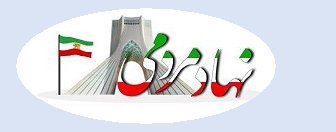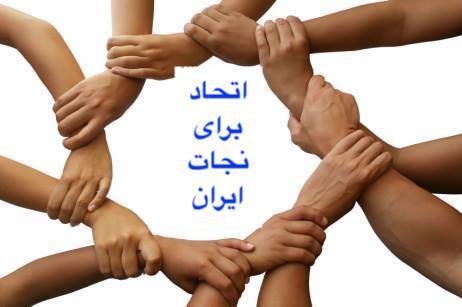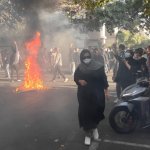 FELICE FRIEDSON AND SARA MILLER
FELICE FRIEDSON AND SARA MILLER
01/17/2023
The Media Line talks exclusively to Iranians inside and out of Iran about their determination to stay the course, support from members of the armed forces, and the Islamist regime’s secret fears of losing control
It has been precisely four months since the first proverbial stone was thrown in the protests raging across Iran triggered by the death of 22-year-old Mahsa Amini in police custody.
Western nations such as the members of the G7 (Canada, France, Germany, Italy, Japan, the UK, and the US) and entities such as the European Union have imposed sanctions on the Iranian regime and officials within it due to human rights violations against the protesters. The United Nations also removed Iran from its Commission on the Status of Women in December 2022.
Yet 16 weeks is a long time in the global news cycle and except for particularly grave developments such as the execution of protesters, other world events have taken precedence on front pages. And while the world may be – as Iranians lament – largely looking the other way, Iranian protesters are still engaged in a fight for their lives, for their rights, and for their freedoms as their subjugators take advantage of the international ennui to crack down even further.
According to the Human Rights Activists News Agency, by late December, the Iranian security forces had killed at least 520 people – including 70 children – as they sought to quell the monthslong nationwide protests. More than 30,000 people are also believed to have been arrested.
The Media Line’s Felice Friedson spoke to Iranians from The New Iran, a not-for-profit grassroots political organization established in 2010, where several of its founders have been working together against the Islamic Republic of Iran (IRI) since 2003, and involved in the fight, inside and out of the country. Many can barely, if at all, remember a time when their country was not controlled by the Islamist rulers. They may not recall life before the repressive regime, but they know what future they want and are determined to achieve it.
The Media Line: Your organization and others are disappointed with the world and especially the governments that are not on the side of the Iranian people. What was done right and by whom? What is missing?
Faezeh Moheb Zandi, France: The governments as a whole did two important things right: the first was the expulsion of the Islamic Republic from the Commission on the Status of Women and the dishonor of the regime in the eyes of the international community, and the second was the unprecedented decision by the Human Rights Council at the United Nations regarding the appointment of the fact-finding commission.
What is lacking is the complete severance of economic and political relations with the Islamic Republic. Also, [given] the crimes committed by Ali Khamenei and his partners, and their genocide, they should be brought to justice as murderers and for crimes against humanity and violating the Universal Declaration of Human Rights.
Vahid, Iran: To date, other countries have only provided lip service. We want all IRI ambassadors to be kicked out, a complete cutoff of diplomatic and financial ties with the IRI.
Esther Salimi, Sweden: Until now, the governments of Europe and of Canada have been trying to find a solution to help the people of Iran. But it seems unlikely that the Democratic Biden government wants to help the people of Iran. Financial and intellectual aid to the opposition, which is trusted by the people of Iran, can help with the downfall of [the regime].

Protesters in Iran have been shot with pellet guns, causing damage to faces and property (Courtesy)
Bidari, Iran: We know that the world – the left-wing governments of the world and the globalists – does not want the people to follow the path they have chosen. We know that if our voices are not heard, it is only because of the divisions in the national unity of the people and that their united voice, which is the desire for freedom and salvation of the homeland, is not being heard.
We know that the media are not with us because they follow the policies of their respective countries, and the voice of my oppressed nation is lost in this nauseating maze and it brings nothing but more killing.
But I want to tell your audience that our revolution is not a football game that you can watch. Those who are in the middle of the field are human beings just like you and their blood turns the streets’ pavements red. These are the young people of Iran who are dying and you are witnessing the most disgusting, dirty, and unfair game in history, and you are witnessing the most shameless silence in history in the face of this vast and obvious massacre.
We will take back our Iran with or without your leaders, but how will you, who are watching the most tragic massacre in history, answer your conscience? This is the only question of the Iranian people.
Nasrin Zirbandian, Denmark: The people of Iran suffered all kinds of insults and humiliations for 43 years, and every time they wanted to make their voices heard by [foreign] governments, those governments turned a blind eye and the Islamic Republic succeeded in suppressing them.
But when Mahsa Amini was killed, the people of Iran couldn’t stand it anymore and started to protest, even though they are still being severely suppressed. They want justice and freedom, and they made their voices heard by the world as much as they could. But unfortunately, no action has been taken yet, and I think, as always, some of these governments, who [feed off] the Islamic Republic, want this system to last, even though the people of Iran are living in the most difficult conditions.
The people of Iran have come to the streets with empty hands for more than three months and are demanding freedom and the downfall of the Islamic Republic, even though they witness the execution of innocent youths every day. The best thing the international community can do is to completely close the embassies of the Islamic Republic all over the world and freeze the bank accounts of the Islamic Republic and their agents, and finally stop supporting the Islamic Republic financially and boycott this oppressive system.
Behrouz Farshadfar, Turkey: It is the world who heard the voice of the Iranian people – not the governments, not the human rights organizations, and not the leaders of the countries. All those who cooperate with the Iranian regime for the sake of short-term benefits have kept the government of the Islamic Republic standing until today. The only help that the countries of the world can give today is to put the Islamic Revolutionary Guard Corps (IRGC) on the terror lists and expel the ambassadors of the Islamic Republic from their countries because they are all security forces.
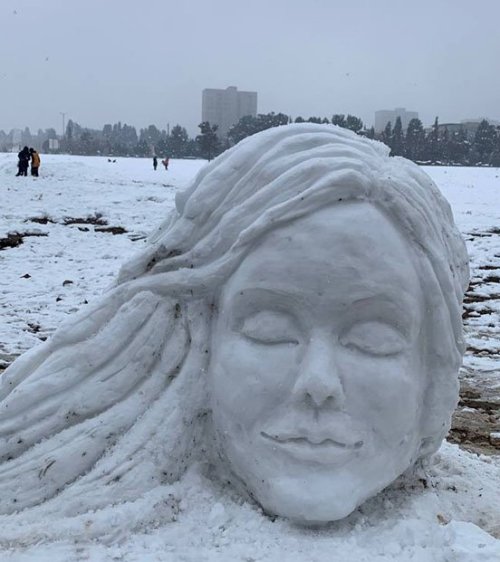
A statue of Mahsa Amini created from the first snow to fall in Isfahan, Iran in January 2023. (Courtesy)
TML: How many people are protesting in how many cities every day?
Esther Salimi, Sweden: Inside Iran, every Friday countless people are protesting in Zahedan [in southeastern Iran], and their numbers have always been great. In other cities, after the executions and arrests – and most of the protests were in the cities where young people lost their lives to executioners – the number of participants is less than at the beginning of the revolution.
Protests continue in several Kurdish cities, but the number of participants has decreased. In Tehran, protests are taking place in several areas and in smaller numbers than at the beginning of the revolution.
Vahid, Iran: To date, there have been demonstrations in over 150 cities. In the cities of Tehran, Karaj and Mashhad there have been many demonstrations, and a few [have lasted] over 30 days nonstop.
Behrouz Farshadfar, Turkey: Protests have been held in about 170 cities. In Sistan and Baluchestan [Province, of which Zahedan is the regional capital], they take place on a regular basis, but in the rest of the cities, since the silent majority have not yet come to the streets, neighborhood-based teams start wherever they see fit and are in communication with each other. As soon as the repressive forces move toward the people, they announce and start at another point. This dispersion has caused the energy of the oppressive forces to be taken. We do not know how many people gather in how many cities every day.
TML: How many security officers joined the revolution and how did they help?
Behrouz Farshadfar, Turkey: There are people from the army ground forces, Green Helmets (part of the army’s ground force commandos), and the air force who joined the people, including [Lt.] Reza Kushkinejad from the army. They were ordered to be fired [and] they were harassed by the Islamic Republic.
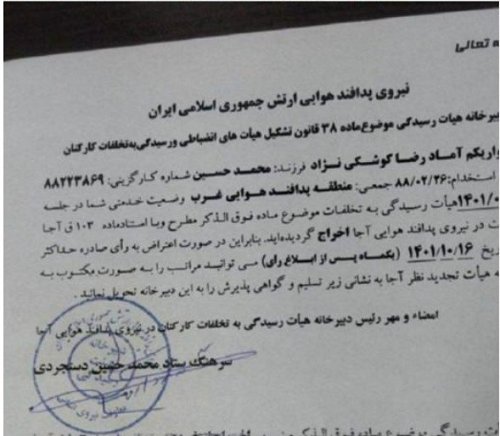
Lt. Reza Kushkinejad’s dismissal from the army. (Courtesy)
But as far as we know, more than 80 people from the army, Islamic Revolutionary Guard Corps, and Basij [IRGC paramilitary] are in prison in IRGC barracks on Afsariyeh Highway in Tehran. This is from our research team, from our insiders, so there are no exact statistics.
Dr. Amir Hamidi, USA: According to the confidential and official documents of the Ministry of Information, in the past month alone, 4,321 people have resigned from the military forces. Iran’s government continues to pretend that the situation is normal, but the news tells [us] of the fear of the Islamic Republic about the depletion of military forces.
According to the confidential documents of the Ministry of Intelligence, which were published by hacking groups last week, the leader of Iran has expressed his concern about the depletion of the military forces and mass resignations in a meeting with the heads of the army and admitted that the protests were prolonged.
TML: Did the Iranian soccer players in Qatar, who stood in solidarity with the protesters, change anything on the ground for the revolution?
Behrouz Farshadfar, Turkey: By no means. Iranian athletes in Qatar did not do anything positive and did not make any changes in solidarity with the protesters. From the perspective of the great nation of Iran, these were the ruling team of the Islamic Republic and not the team of the great nation of Iran, that’s why when they lost, people in Iran held a joyous celebration and when they returned to Iran, no one came to welcome them. An all-government team that did not sing the national anthem of Iran in the first game, but sang the anthem of the Islamic Republic in the second game so that the people of Iran hate them more than before.
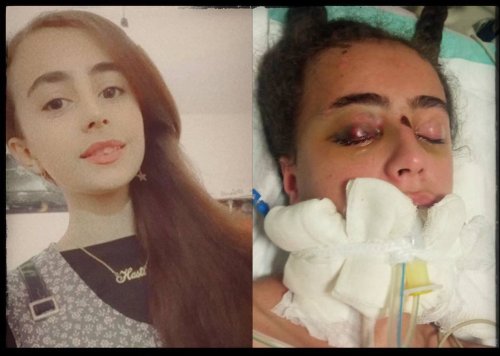
An unnamed 16-year-old protester who was badly beaten by the Iranian security forces (Courtesy)
TML: Has there been a turning point that boosted the likelihood of the fall of the regime?
Faezeh Moheb Zandi, France: From a domestic perspective, the regime’s reputation fell with the false claim that Iranian women are happy with the hijab. And with the unfortunate death of Mahsa Amini, the revolution began in the eyes of the world with the removal of the hijab and cutting of hair, [which led to] international support for women. The veil over the crimes of the child-killing and misogynistic government of the Islamic Republic was torn away and placed under the microscope.
Behrouz Farshadfar, Turkey: The regime has survived until now due to some internal and external factors. There are two external factors: firstly, a failure to announce an interim government or the presence of a strong working group and a strong council to deliver a message to the Iranian nation, and secondly, Western countries that appease the Islamic Republic for their own interests.
In terms of internal factors, there is suppression, execution, and torture of the young and fighters for the country. Don’t forget that every person who is killed adds thousands of people to the regime’s opposition, but they are not necessarily fighters and trained in the field.
If we had a temporary government that would send a message or a command headquarters that would send a message to the Iranian people all over the world, then we would have won much faster. This is the great weakness of this revolution.
Dr. Siamak Rafizadeh, Canada: The young generation in Iran is fed up with the lies, deceit, corruption, embezzlement, torture, rape, execution of dissidents, and mismanagement of Iranian natural resources of the last 43 years. And if we go back even 100 years, when the great Reza Shah started the modernization of the country by introducing immunization, clean water supplies, birth certificates, and mass transportation, there was fierce resistance by the mullahs for all of them through creating new fatwas and new interpretations of Sharia law to oppose the king.
As a matter of fact, the mullahs have always been the strongest barrier to progress and reforms in my country, going back to the Qajar dynasty. And they have caused so many wars and loss of life and loss of vast territory in my country, which we can talk about another time.
The “Woman, Life, Freedom” slogan is a cultural struggle against the misogyny and patriarchy that have deep roots in the philosophy of Islam and especially the Shia religion. As a matter of fact, the supremacy of men and slavery role of women in Islam are the cornerstones of Islamic theology, with hundreds of verses in the Quran and teachings of the Prophet Muhammad to back them up.
These facts, unfortunately, do not have any market in the West, since they do not want to create any controversy or tensions in the communities, but on the other hand, radical Islamist movements use the freedom of speech in the Western world to promote the same hardships that they apply to their people in Iran, Afghanistan, Syria and so on.
So the cry of “Woman, Life, Freedom” is a strong demand against the school of holy ignorance and backwardness of a 1,400-year-old mentality. Young generations of Iranians demand a future where there is no child abuse, forced marriage (at as young as 10 and 11 years old), no forced belief, no forced religious education, and more. They want the freedom to decide for themselves (not for clergy to decide on their behalf because he claims to be the representative of the 12th imam on earth!).
If the Western media and politicians do not wake up and see these threats, it won’t be long until we see the results in our communities – the same approach that Islamists showed against journalists in France and other places. They do not even tolerate criticism, whereas we are talking about removing them from power.
Freedom means that people have the right to choose their government and also the right to remove it. All these demands from the Iranian youth are in contrast with what the Islamic regime has offered in the last 43 years, and the price of saying “No” to mullahs has been in front of our eyes at least for the last three to four months.
